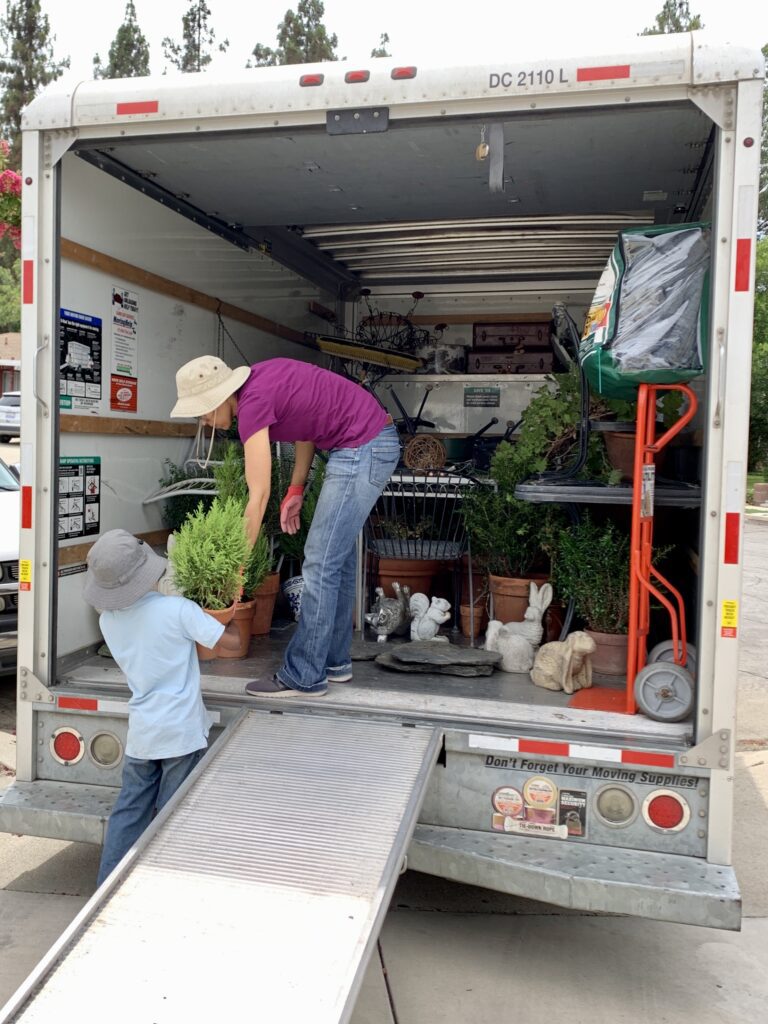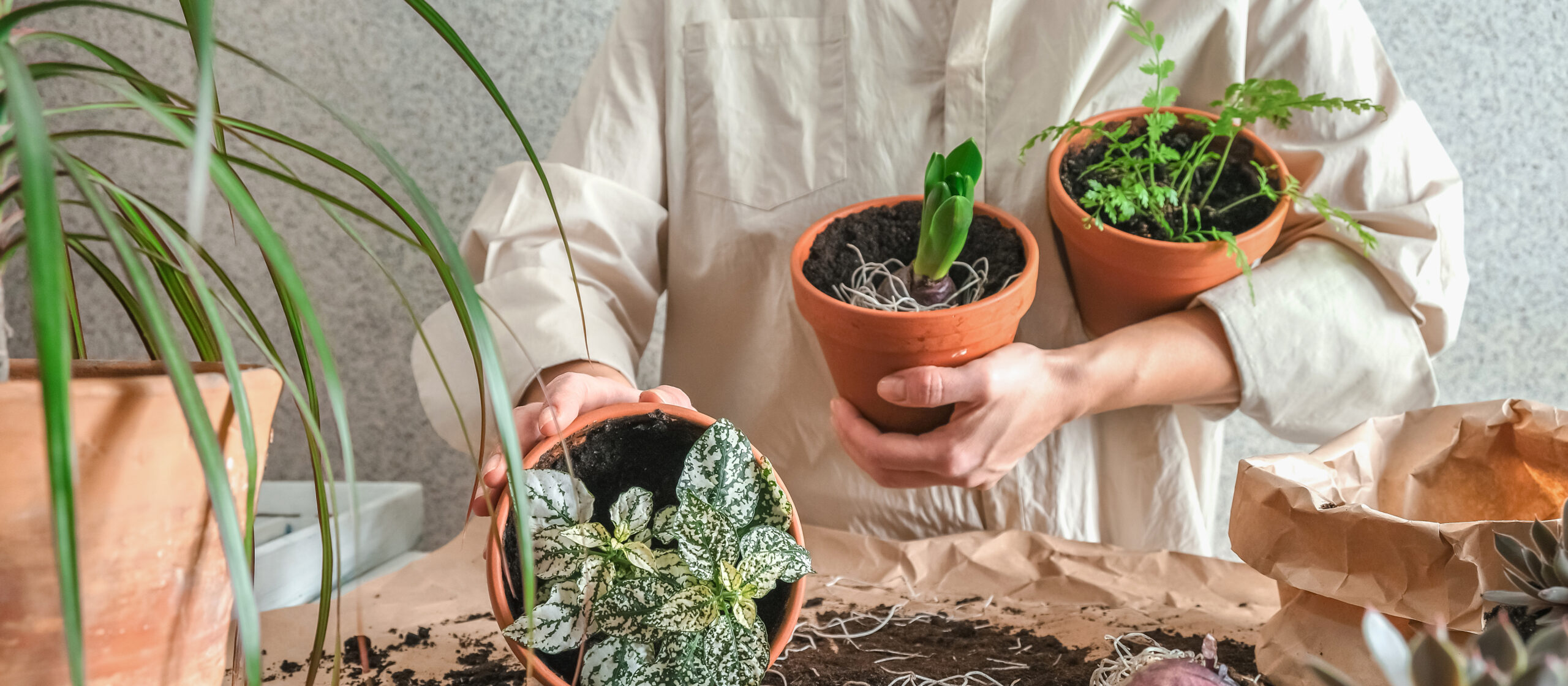Moving your houseplants can be just as stressful for them as it is for you. These leafy companions have grown accustomed to their specific spot in your home, and a change in location may cause them to struggle. Preparing your plants at least two weeks before the move by repotting them in fresh soil and checking for pests can significantly increase their chances of survival during relocation.

The transportation phase is equally critical. Using shatterproof pots can prevent damage during bumpy rides. For smaller plants, you can create a secure carrying system by using cardboard boxes with cutouts that keep the pots steady. It’s also wise to be aware of legal restrictions and climate considerations before taking your plants across state lines.
Once you’ve arrived at your new home, your plants will need time to adjust to their new environment. Place them in locations with similar light conditions to their previous spots. You may notice some leaf drop or wilting—this is normal as your plants acclimate to their new surroundings.
Key Takeaways
- Prepare your plants weeks before moving by repotting, inspecting for pests, and pruning as needed.
- Use proper packing materials and secure transportation methods to protect your plants during transit.
- Give your plants time to adjust to their new environment by maintaining similar light and watering conditions.
Planning Your Move with Plants
Moving with plants requires careful preparation to ensure your green friends arrive safely at their new home. A successful plant move hinges on timing, proper preparation, and choosing the right moving help.
Choosing the Right Time to Move
The season matters when relocating plants. Spring and fall generally offer the mildest conditions for plant transportation. Avoid moving during extreme weather—plants can suffer shock from freezing temperatures or scorching heat.
Check your local forecast before setting your moving date. Aim for overcast days with moderate temperatures between 50-75°F if possible. This reduces stress on your plants during transit.
For long-distance moves, consider the climate zones you’ll be traveling through. If moving from a warm to cold climate (or vice versa), give your plants time to acclimate gradually after arrival.
Some plants are more sensitive to season changes than others. Tropical plants hate cold drafts, while dormant plants in winter may handle a move better than actively growing ones.
Preparing Plants for the Transition
Begin preparing your plants 2-3 weeks before moving day. Stop fertilizing to slow growth and reduce water slightly (but don’t let them dry out completely).
Prune overgrown foliage to make plants more manageable and reduce stress. Remove dead or yellowing leaves to prevent disease spread during transit.
Pre-Move Plant Checklist:
- Inspect for pests and treat if necessary
- Repot plants in plastic containers if currently in breakable pots
- Water moderately 2-3 days before moving day
- Place saucers under pots to catch drainage
Consider taking cuttings from larger plants that might be difficult to transport. This gives you a backup in case the parent plant doesn’t survive the journey.
Label each plant with basic care instructions, especially if someone else will be handling them during the move.
Researching Plant-Friendly Movers
Not all moving companies will transport plants, and some have specific policies. Contact potential movers early to discuss your plant transportation needs.
Look for movers with experience handling delicate items. Trusted moving experts in Rosenberg, TX often offer specialized services for transporting plants safely.
Ask these key questions when researching movers:
- Do you have climate-controlled vehicles for plant transport?
- What precautions do you take to keep plants upright?
- Is there an additional fee for plant transportation?
- Are there any plants you won’t transport?
For interstate moves, check agricultural regulations as some states restrict certain plants to prevent invasive species spread. Your moving company should be knowledgeable about these restrictions.
Remember that professional movers can provide proper equipment and expertise to transport your plants safely, reducing your stress on moving day.
Packing Strategies for Plants

Moving plants requires careful planning and proper packing techniques to prevent damage. Properly securing your green friends will ensure they arrive at your new home healthy and ready to thrive.
Securing Soil and Roots
Before moving day, make sure your plants’ soil is slightly moist but not soggy. This helps prevent soil from shifting while providing necessary hydration.
Cover the soil surface with plastic wrap, pressing it gently against the soil and around the plant stem. This creates a barrier that prevents soil spills when moving.
For extra protection, place small plants in paper bags with the stems poking out the top. Then secure the bag with twine or a rubber band around the pot rim.
For plastic pots, consider using a trash bag at the base. Simply cut a hole in the bottom of the bag, slide the plant stems through, and pull the bag up to cover the pot completely.
Pro tip: Line boxes with plastic bags before placing potted plants inside to catch any water leakage.
Protecting Leaves and Stems
Delicate foliage needs special attention during a move. For small to medium plants, gently wrap them with old cloths or packing paper to prevent breakage.
Create plant “sleeves” using paper cones for additional protection. These can be made from newspaper or brown packing paper and taped in place.
Never pack plants tightly together as this can crush or damage leaves. Instead, use dividers in boxes to keep them separate.
For tall plants with trailing vines, carefully coil the vines and secure them with soft plant ties or strips of old t-shirts. This prevents tangling and breakage during transport.
Moving day checklist for plant protection:
- Paper sleeves for delicate plants
- Soft ties for securing vines
- Bubble wrap for fragile stems (loosely wrapped)
- Sturdy boxes with air holes
Custom Solutions for Large Planters
Large plants present unique challenges when moving. For heavy pots, use wood crates or sturdy boxes with reinforced bottoms to prevent breakage during transport.
Consider dolly transportation for particularly heavy specimens. Place the pot on a furniture dolly and secure it with bungee cords for easy movement.
For tall plants that can’t be transported upright, lay them on their sides on a blanket. First, wrap the pot in plastic, secure the soil, then carefully roll the plant in the blanket, leaving the top exposed if possible.
If you’re moving in cold weather, create temporary greenhouse barriers using clear plastic bags. Cut ventilation holes and remove them once you arrive at your destination.
Remember that having someone help you lower large plants into protective bags makes the process much easier and reduces strain on both you and your leafy companion.
Loading and Transporting Plants

Safely moving your plants requires careful planning for both loading and transportation. The right approach will protect your green friends from damage and stress during their journey to your new home.
Arranging Plants in the Moving Vehicle
When loading plants, never place them in the trunk where air circulation is poor. Instead, bring your plants into the car where they can breathe better. Position taller plants on the floor of your vehicle with shorter ones around them for stability.
Secure plant containers to prevent tipping by using seat belts when possible. For added protection, place plants in boxes with dividers to keep them upright. Newspaper or packing paper works well to fill gaps.
Try this arrangement method: place heavy, sturdy plants at the bottom and delicate ones on top. Keep plants away from direct sunlight pouring through windows to prevent leaf burn during transit.
For professional moves, ask if your movers have experience with plants. Some moving companies offer special plant-moving services with climate-controlled options.
Maintaining Plant Health En Route
Keep the temperature comfortable for your plants during transportation. Avoid extreme heat or cold, aiming for 65-75°F when possible. During rest stops, crack windows slightly if you’ll be away from the vehicle for more than 15 minutes.
Water your plants a few days before moving, ensuring soil is moist but not soggy. Most plants can survive up to a week without additional water, but check them during longer journeys.
For trips lasting more than two days, consider these quick health checks:
- Look for wilting leaves or dry soil
- Provide small amounts of water if needed
- Remove any damaged leaves or stems
If traveling during winter, wrap plants in paper sleeves to protect them from cold drafts. In summer, use sun shields on windows to prevent overheating your leafy passengers.
Unpacking and Acclimating Plants
When you arrive at your new home, your plants need immediate attention and a careful introduction to their new environment. Proper acclimation prevents shock and helps them thrive after the stress of moving.
Immediate Care Post-Move
Unpack your plants first before tackling other items. They’ve been confined in dark conditions and need light and fresh air quickly. Remove any protective coverings and inspect each plant for damage. Check for broken stems, fallen leaves, or soil spillage.
Water your plants gently but thoroughly. Moving often dehydrates plants, but don’t overwater as this can cause root rot. Place each plant on a stable surface away from drafts, heating vents, and direct sunlight initially.
Make note of any plants showing signs of stress like wilting or yellowing leaves. These plants need extra attention in the coming days. Don’t be alarmed by a few dropped leaves—this is normal after transport.
Professional movers can sometimes help with plant placement if you discuss this service beforehand.
Introducing Plants to Their New Environment
Give your plants time to adjust gradually. Don’t immediately place them in their permanent spots—this can shock them. Instead, put them in a moderate location with indirect light for 3-7 days.
Acclimation Timeline:
- Days 1-3: Keep in moderate, indirect light
- Days 4-7: Begin moving toward final locations
- After 1 week: Position in permanent spots
Resist the urge to move plants around frequently during this period. Each move requires a new adjustment period.
Monitor light conditions in your new home. South-facing windows provide different light than east-facing ones. You might need to rethink plant placement based on your new home’s layout.
Maintain consistent watering but adjust for your new climate. If you’ve moved somewhere more humid or dry, your watering schedule will need tweaking. Watch your plants closely and they’ll tell you what they need!
Post-Move Plant Care
After the boxes are unpacked and the furniture is in place, your plants need special attention to recover from the stress of moving. The right care during this critical period can make the difference between thriving houseplants and struggling ones.
Monitoring Plant Health
Watch your plants closely during the first week after moving. Plants often show signs of stress through wilting leaves, yellowing, or dropped foliage. This is normal! Your green friends are simply adjusting to their new environment.
Check the soil moisture every few days, but resist the urge to overwater. Many people make the mistake of drowning their plants with kindness after a move. Instead, stick to a regular watering schedule based on each plant’s specific needs.
Monitor light conditions in your new home. Plants that thrived in your old space might need repositioning for optimal light exposure. Remember that:
- South-facing windows provide the most light
- East and west windows offer moderate light
- North windows provide gentle, indirect light
Temperature and humidity changes can also impact plant health. Use a small humidifier near tropical plants if your new home is drier than your previous one.
Addressing Stress and Damage
Physical damage during a move is common, but most plants can recover with proper care. Trim any broken stems or damaged leaves with clean, sharp scissors to prevent disease spread and encourage new growth.
If a plant suffered root damage or soil loss, repot it carefully with fresh potting soil. Wait 1-2 weeks after the move before repotting to avoid compounding stress factors.
For severely stressed plants, create a recovery zone with ideal light, temperature, and humidity. This plant ICU can work wonders for struggling specimens.
Professional movers with plant experience recommend holding off on fertilizing for 2-4 weeks after a move. Your plants need time to adjust before processing additional nutrients.
If you notice pest issues after moving, address them immediately. Quarantine affected plants and treat with appropriate methods to prevent spreading to your other houseplants.

